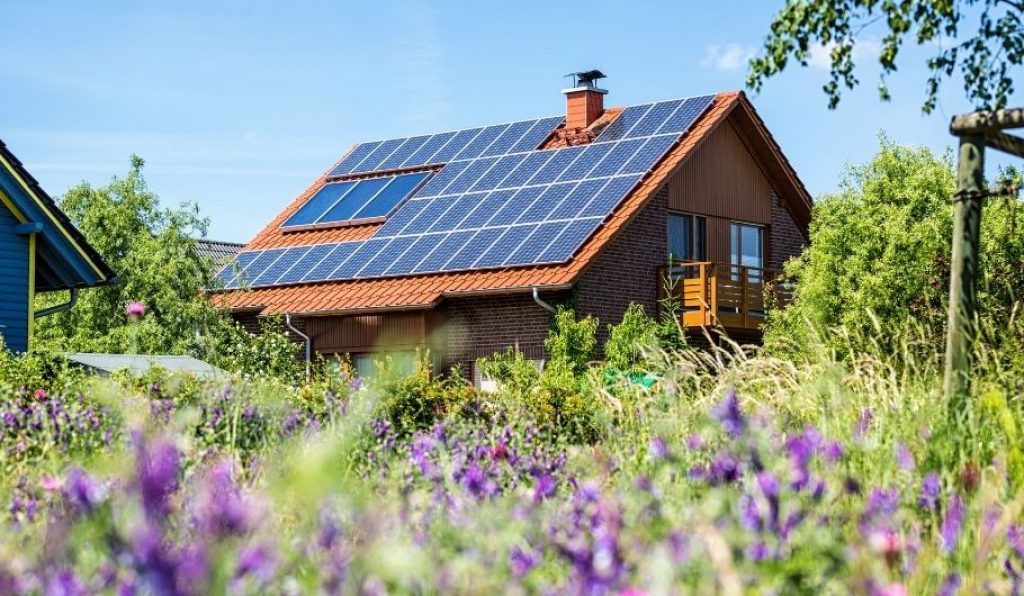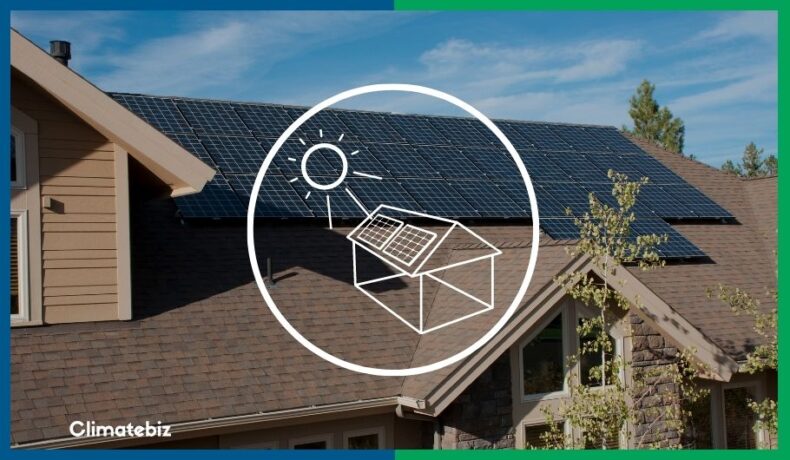We’ve explored the leasing of solar panels in the U.K, but what about on the other side of the pond, in the U.S.?
Exploding energy prices, including historical inflation, are causing many homeowners and businesses in the U.S. a massive headache.
We know that investing in solar is worth it. After all, these green tech systems can offset energy costs in a more environmentally-friendly manner.
But what if you were to lease a PV system instead of purchasing one, particularly as a U.S. resident?
Well, it appears as though the leasing of solar panels is becoming an increasingly attractive alternative for homeowners and businesses throughout the U.S. Though that’s not to say this method of using solar doesn’t come with its downsides.
So, how does leasing a solar system work in the U.S.? What are the advantages and disadvantages?
Let’s find out.
Table of Contents
How Does A Solar Panel Lease Work In The U.S.?
You might be familiar with the concept of leasing — exchanging money to use an asset. You can lease an apartment, a garage, or a piece of equipment.
Solar leases are similar to car leases; they are a form of third-party ownership. Under a solar lease, the third party installs solar panels on your property and then sells you the electricity produced.
Your monthly lease payment is based on the estimated annual production of your solar system. Ideally, the annual lease payment in Year 1 of the lease agreement should match your energy savings in Year 1.
Lease Options
The lease agreement will have a fixed term length, typically 20 to 25 years. At the end of the fixed term, you can either:
- purchase the system at the market value;
- remove the system;
- renew your contract and continue the monthly payments.
In addition, many lease agreements contain an annual “escalator.” An escalator increases your monthly payment by a pre-agreed rate over your term length (typically 1 to 5% per year).
If you don’t own the land or the building, establishing a rooftop lease agreement with the landlord means you can use the roof for a solar installation. Similarly, you can lease land adjacent to the property if required.
Associations
You should ensure that the leasing company is a member of a professional association, which holds members to service delivery standards. These associations also offer redress processes for consumers who wish to complain about a member.
Installers
You should also find out which installer the leasing company intends to use and look into their reputation. A complete list of installers in the U.S. is available here, but there are also state-level lists, such as this one for Minnesota. They should be licensed by the relevant state licensing agency.
Leasing Solar Panels For Your Business
If you’re looking to install onsite solar panels for your business, you need to consider the following:
- Carry out due diligence on any proposed system to ensure it’s appropriate for your energy needs.
- Only employ a solar company with a proven track record in installations of the scale under consideration. The solar company should have a clean record with the Better Business Bureau.
- Ensure that there’s a credible monitoring and maintenance system ready to go. If there is none, possible faults could go undetected, reducing system performance.
- Consider the accounting implications of leasing versus buying.
Is Leasing Solar Panels In The United States Worth It?

The short answer: it depends. We’ll look at a working example involving both the savings and cost of leasing to determine this.
Leasing Solar Panels Worked Example: Savings
The average house in the US uses about 11,000 kWh of energy per year, with an annual average electricity cost of about $1160 per year.
Typically, a household uses about 50% of the output of a domestic solar system. The solar system exports the remaining 50% onto the grid. A 6.0 kWp would generate about 10,000 kWh per year, although this depends on the state.
Therefore, the 6.0 kWp system would reduce your annual energy cost by about 5,000kWh per year. At 11 cents per kWh, this saves $550 per year.
As a result, over a 20-year system lifetime, this total saving would amount to around $11,000 (ignoring any growth in energy prices).
Leasing Solar Panels Worked Example: Costs
According to SEIA numbers, small-scale systems in the U.S. cost about $3100/kWp to install, meaning a 6.0 kWp system costs about $18,600.
Assuming that the solar company arranges the lease payments to remain cash flow-neutral, you would pay $550 per year in lease payments.
As a result, the cost to you over the 20-year agreement would be 20 x $550 = $11,000.
The opportunity cost of purchasing is more evident when you consider what you could do with your saved capital. In Year 1, you would have spent $550 and saved $18,050.
Example
Imagine you took this $18,050 and invested it in an S&P 500 ETF at an average annual return of 8%. By Year 20, your pot would be worth around $84,000. Therefore, the net benefit is $73,000, well above the $11,000 lease costs.
Summing Up
The above is a simplified working example, but you can use our in-house calculator to determine what your house or business needs. In addition, Google has supported a solar financial calculator designed to forecast savings from a U.S.-based solar system.
What Are The Cons Of Leasing Solar Panels In The U.S.?
The following are disadvantages of leasing solar panels:
- Savings are lower than if you had bought the panels with cash or a loan because you’re paying for the solar company’s finance and asset management costs.
- Risk of existing roof damage to the roof: some unscrupulous solar companies do not take due care when installing solar panels. Ensure you have your roof surveyed to check if there is any such damage.
- Complicates selling your home: the solar company may have to grant permission for you to sell your house; this can add cost and delay selling or buying a house.
- You may not be able to develop your house: the lease agreement may prohibit you from developing your property.
In addition, several risks also exist, specifically for businesses:
- Reduced energy usage: if your business’ energy usage reduces, the savings generated by the solar system will not be as high as expected. Therefore, you need to assess current and projected energy use. For example, more energy-efficient equipment can lower your business energy use.
- Balance sheet impact: leased solar panels will reduce your company’s running costs, but they will not appear as an asset on your balance sheet. Your accountant needs to consider the impact of this on your business.
What Are The Pros Of Leasing Solar Panels In The U.S.?
There are five main advantages to leasing solar panels:
- Save money on electricity: the system will reduce how much energy you use from the grid when switched on.
- Low or no upfront costs: you don’t have to buy the panels and other equipment upfront.
- No maintenance responsibilities: the solar company will monitor the system and arrange for any necessary maintenance and insurance.
- Improved Home Energy rating: a solar system should increase your home’s Home Energy Rating. A high home energy rating can make your home easier to sell.
- Lower carbon footprint impact: fossil fuels supply part of the USA’s electricity. Installing solar helps reduce the country’s use of coal and gas. Annually, a solar system saves 1 tonne per year, the carbon equivalent to 2 people flying return to Cancun.
How To Get Out Of A Solar Panel Lease In The U.S.

To end a solar panel lease in the U.S., you must make some form of payment to the solar company. The lease agreement will outline the conditions and formula for wrapping up the contract, but there are three broad options:
- Buyout
- Market Value Payment
- Transfer to New Owner
Option 1: Buyout
Under a buyout, you pay the outstanding balance on the lease agreement. You can usually choose whether to have the solar panels removed or left on the house. Typically, a buyout can occur after Year 5 of the lease; this depends on the specific contract.
Option 2: Market Value Payment
Alternatively, the lease agreement may require that an expert appraiser determine the fair market value of the system. The value will depend on current market conditions since the appraiser’s judgment decides this. You won’t receive a guaranteed value; instead, you’ll receive a value that the appraiser decides is fair.
Option 3: Transfer To New Owner
Finally, you can transfer the lease to the new homeowner; this will only apply if you want to sell your house.
The transfer will incur some costs and delays due to the paperwork required to make the transfer. Some buyers may be unwilling to accept this, but you can always reduce the house’s selling price by the transfer cost and complete the sale.
Final Thoughts
In conclusion, you don’t own your solar system with leased solar panels, but you benefit from the electricity it generates; you can shave 20 to 30% off your electricity bill depending on your energy use.
A leased solar system can make selling your home more difficult. Therefore, you should consider leasing solar panels in the U.S. only if you:
- Intend to own the property for the foreseeable future; and,
- Don’t plan to develop or extend the property.
If these constraints are acceptable, leasing solar panels for your home or business in the U.S. could be right for you.

